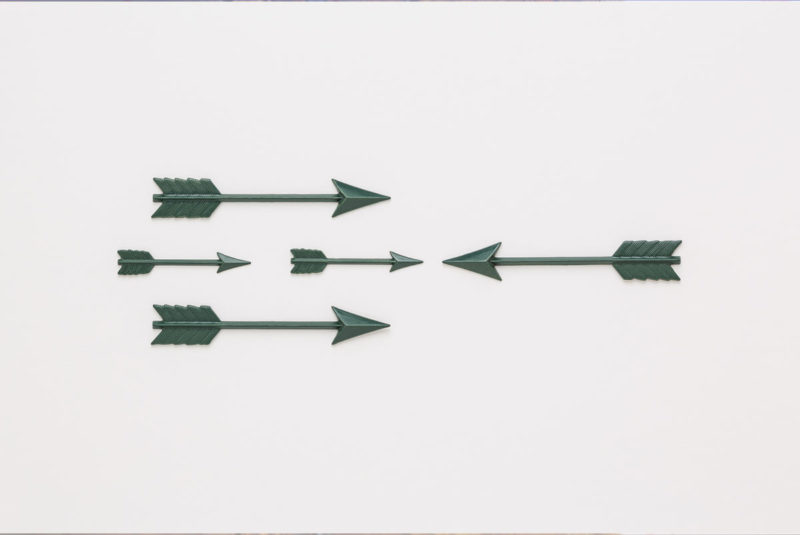Ready To Buy a Home?
Get Approved to Buy a Home
Rocket Mortgage® lets you get to house hunting sooner.
A plot of land can be fertile ground for your imagination. The vacant lot you’re interested in could be where you build your dream home or your business. But becoming the proud owner of land will require more than daydreams – it will require learning all about land loans.
Land loans, also known as lot loans, only finance land purchases. We’ll help you navigate land loans, how they work and where you can get one.
What Are Land Loans?
Land loans allow borrowers to buy a piece of land. The type of land loan you get (there are three) will depend on your plans for the land.
A land loan is a savvy option for future home builders who don’t immediately plan to build or finance a construction project.
And just so we get this out of the way, land loans and construction loans are different. Construction loans are intended for borrowers who are ready to develop the land and start building.
Construction loans vs. land loans
A construction loan covers the cost of the land and the cost to build on the land in one loan. A land loan only covers the cost of the land.
A construction loan makes more sense if you have a building plan and want to start construction right away. But you’ll need more than money and a high credit score to be approved for a construction loan. Your lender will also need to see your construction plans, and you’ll typically need to verify that you’re working with a licensed builder.
What Are the Different Types of Land Loans?
There are three types of land loans, and each loan corresponds to the level of development on the plot of land.
Because the properties are empty (think: no buildings), lenders have no collateral to secure land loans. That means lenders will likely offer higher interest rates and require larger down payments to cover the risk they’re taking to provide the loan.
Let’s review each land loan – from a loan for the least developed property (dirt and little or no access to basic utilities) to the most developed property (paved roads and access to utilities).
Raw land loan
If the name isn’t enough of a clue, raw land loans are for undeveloped plots of land. We’re talking: no sewer system or septic tank, connection to electricity or roads leading into the property.
To increase your chances of getting approved for a raw land loan, create a detailed building plan that outlines your plans to develop the land. The more a lender believes you’re committed to the project, the higher your chances of approval.
While the purchase price of raw land is typically cheaper than more developed properties, loans for undeveloped land are generally more expensive because of higher interest rates and higher down payment requirements compared to other land loans.
Unimproved land loan
Unimproved land has had some development – but there is still work to be done. You can usually find some utility connections and amenities, like a paved road, but unimproved land typically lacks electricity, running water and phone service. Prepping the land to build on it will require more development.
An unimproved land loan is relatively easier for a borrower to get – at least easier than a raw land loan. But like a raw land loan, your lender will likely require a large down payment, a high credit score and a detailed construction plan.
Improved land loan
Improved land is the most developed and accessible because the land typically has roads and essential utilities and services, like sewer or septic systems, electricity, gas, water and more. Given the level of development on the land, you’ll typically have an easier time getting financing for improved land than a raw or unimproved property.
Because improved land is essentially “ready to go,” it will usually have a higher price tag, but the loan will be less expensive. Improved land loans tend to have lower down payment requirements and lower interest rates.
How Do Land Loans Work?
Applying for a land loan is similar to applying for a mortgage to buy a house. One key difference is that it can be harder to determine how much the land is worth because there’s no structure on the property to appraise.
When you apply for a land loan, the lender will review your income, employment, debt-to-income (DTI) ratio and credit score. Your lender will also need to know:
- Whether the land is raw, unimproved or improved
- Your planned use of the land
- The improvements you plan to make on the land
- Details on the land’s boundaries, road access and zoning restrictions
Where Can I Get a Land Loan?
You can get a land loan from a few places.
Local banks and credit unions
Local banks and credit unions are a good place to start because they typically offer more favorable land loan options. And because they’re local, they are usually more familiar with properties in the general area.
The U.S. Department of Agriculture (USDA)
If the property is in a qualifying rural or agricultural area, you may qualify for a USDA loan. The U.S. Department of Agriculture backs these loans to encourage growth and improve economic conditions in rural areas.
The Small Business Administration (SBA)
If you plan on using land for business purposes, you may qualify for an SBA 504 loan through the SBA.
The SBA 504 loan (also known as the CDC/504 loan) is unique. The loan’s funding comes from three sources: the borrower makes a minimum 10% down payment, the Certified Development Company (CDC) lends 50% of the loan amount and the lender provides the remaining 40%.
Pros and Cons of Land Loans
Whether you want to build right now or further down the line, land loans offer many advantages. But you can’t forget about their potential drawbacks, such as higher interest rates.
Before deciding which type of land loan you need, explore some of the pros and cons of land loans.
PROS of Buying Land With a Land Loan👍
A land loan can provide a little breathing room until you get things in order if you’re not ready to start building.
You may be able to get a better price on an unimproved lot than an improved lot if you’re willing to put in the extra work on the land.
CONS of Buying Land With a Land Loan👎
Land loans are riskier loans for lenders because there is no collateral attached to the land (like a house). Land loans typically have higher interest rates and down payment requirements than traditional mortgages to offset the heightened level of risk.
A lot of work goes into building on a plot of land. You are almost guaranteed to run into unforeseen complications during the construction phase.
Which Type of Land Loan Is Right for Me?
To help answer this question, consider your goals, your finances and your long-term plans.
A raw or unimproved land loan could make the most sense if you want a plot of land but aren’t ready to build on it.
If you’re ready to start construction fairly quickly or don’t plan on developing the land, an improved land loan might be a better choice.
Whichever option you choose, make sure you’re financially prepared to pay the required down payment and make your monthly loan payments.
What Are Other Land Financing Options?
Land loans aren’t the only financing option available to purchase land. There are other ways to borrow money to buy land, including home equity loans, personal loans or even financing through a seller.
Home equity loans
If you have a lot of equity built up in your home, you can take out a home equity loan to purchase land.
You don’t need to worry about a down payment with a home equity loan. And your loan repayment term can last anywhere from 5 – 30 years.
However, there is a huge risk associated with a home equity loan. You could lose your home if you fall behind on your monthly payments.
Personal loans
If you want to use a personal loan to buy land, smaller lots are a better fit for this financing option because the loan amounts are usually smaller. Borrowers usually repay personal loans in 5 – 7 years.
Personal loans offer quick financing and lower fees. If the loan is unsecured, you won’t need to provide collateral. But because there is no collateral to secure the loan, you can expect higher interest rates and credit score requirements.
Seller financing
Seller financing allows a property’s seller to act as a lender. As a borrower, you would enter into an agreement with the seller rather than apply for a loan from a traditional lender.
If you’re finding it difficult to qualify for a land loan, you may want to explore this option. Seller financing agreements can be beneficial because their requirements can be more flexible than traditional mortgages.
The seller hangs on to the property’s legal title until you pay off your seller-financed loan.
Landing the Right Loan
If you’ve always dreamed of buying a piece of land to build your dream home, a land loan can help make your dreams a reality. But not all land loans are built equally.
Are you ready to finally build your palace? Or do you need a minute to decide between a ranch-style or a modern home? Your finances and your timeline should help you decide which type of land loan should work best for you.
Talk to different lenders and don’t be afraid to explore alternative financing!
Take the first step toward buying a home.
Get approved. See what you qualify for. Start house hunting.
The Short Version
- Land loans, also known as lot loans, only finance land purchases
- A land loan is a savvy option for future home builders who don’t immediately plan to build or finance a construction project
- There are three types of land loans, and each loan corresponds to the level of development on the plot of land




